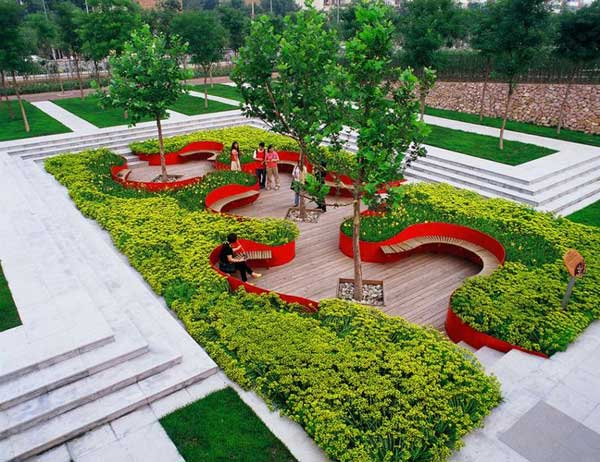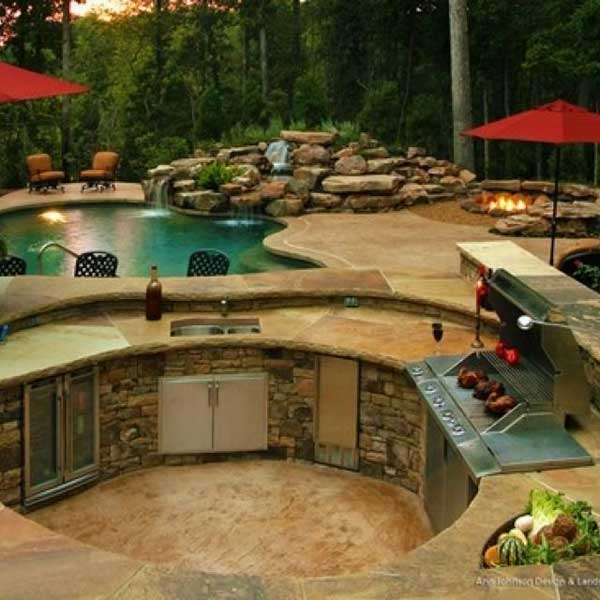23 Impressive Sunken Design Ideas For Your Garden and Yard
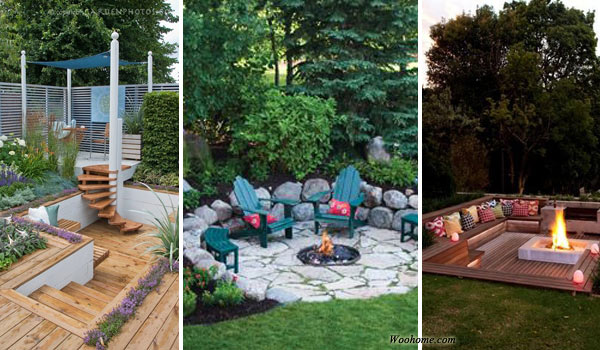
Sometimes, in order to enhance comfort and aesthetics, we often incorporate a sunken space into our yards and gardens. This is especially necessary when dealing with sloped terrains, where a sunken area can be created to seamlessly integrate with the topography.
Regardless of the reasons behind it, a sunken structure cleverly overcomes the limitations of the land, while simultaneously adding a sense of comfort and artistic appeal to our outdoor spaces. In this article, we have compiled 23 inspiring sunken design ideas for patio, backyard or garden. Prepare to be amazed by the numerous creative ways in which you can incorporate a sunken area into your yard or garden. Enjoy exploring these ideas!
1. Cozy Deep Sunken Lounge Retreat
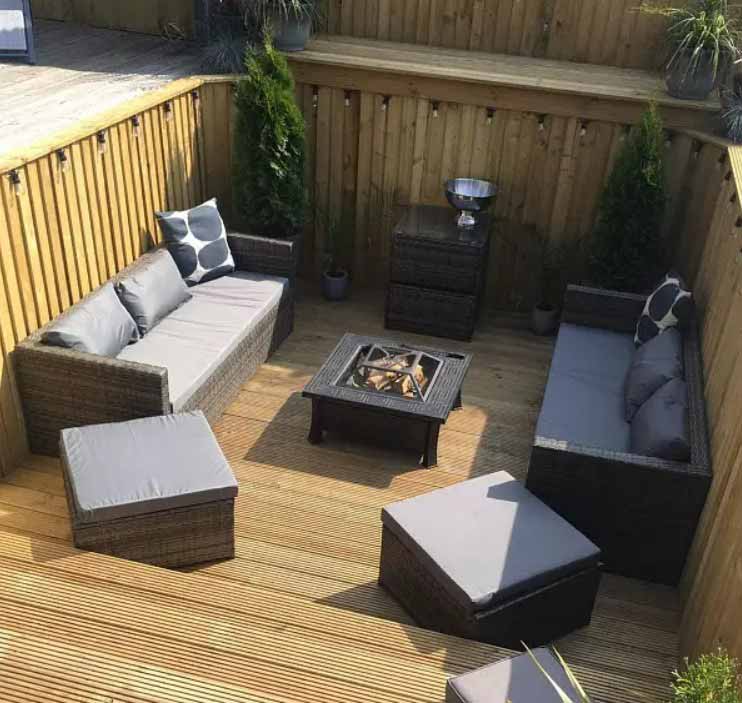
Step into this sunken seating area that offers both depth and comfort, providing a secluded space separate from the rest of your garden. It’s an ideal choice when privacy is a concern, as the design minimizes noise transmission, ensuring a peaceful experience. Source @makingmulberrycottage
2. Lush Green Oasis Seating
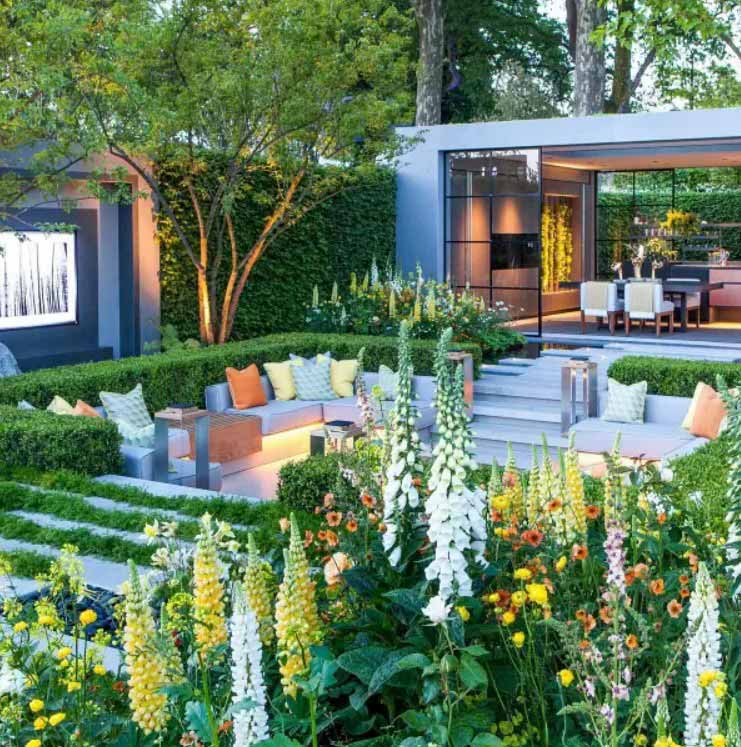
If you adore abundant greenery, then this seating area surrounded by hedges is perfect for you. The hidden garden ambiance, coupled with cozy lighting beneath the benches, creates an instantly inviting atmosphere. @haydesigns.co.uk
3. Spacious Sunken Seating with Refreshments
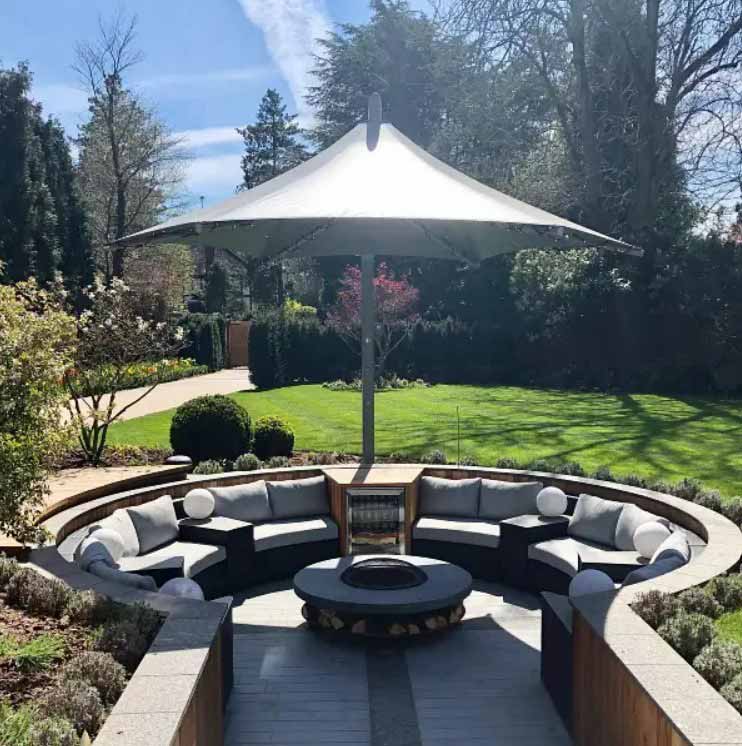
Unlike other seating areas, this one features wide chairs, allowing for ample personal space. Additionally, it includes a convenient built-in fridge, perfect for quick beverage refills and keeping your refreshments close at hand. @snowgooseinteriors
4. Contemporary Urban Sunken Seating
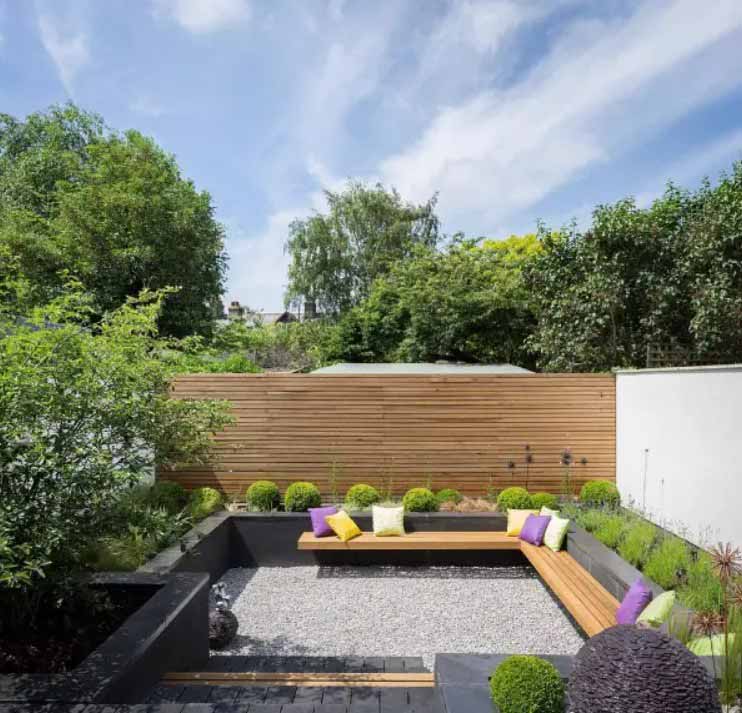
Transform your urban garden with this modern seating area. The combination of a horizontal slat fence and wall offers privacy, while vibrant cushions and numerous shrubs add a splash of color to this corner oasis. @mooiarchitecture
5. Sheltered Sunken Seating Haven
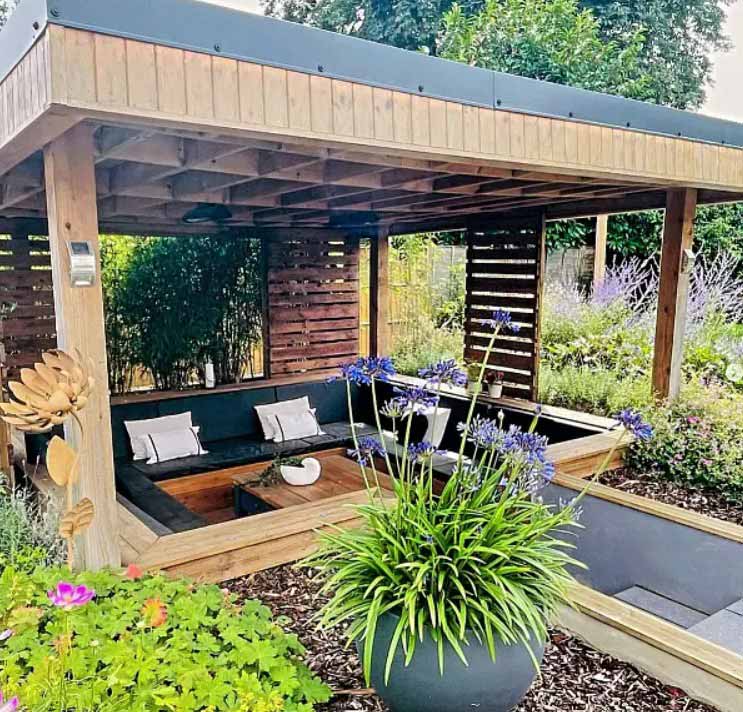
Experience the perfect retreat, whether rain or shine! This wooden pergola provides privacy and protection from the elements, making it an ideal spot to relax on warm days, regardless of the weather. @sherinegridesign
6. Secluded Sunken Seating with Natural Elements
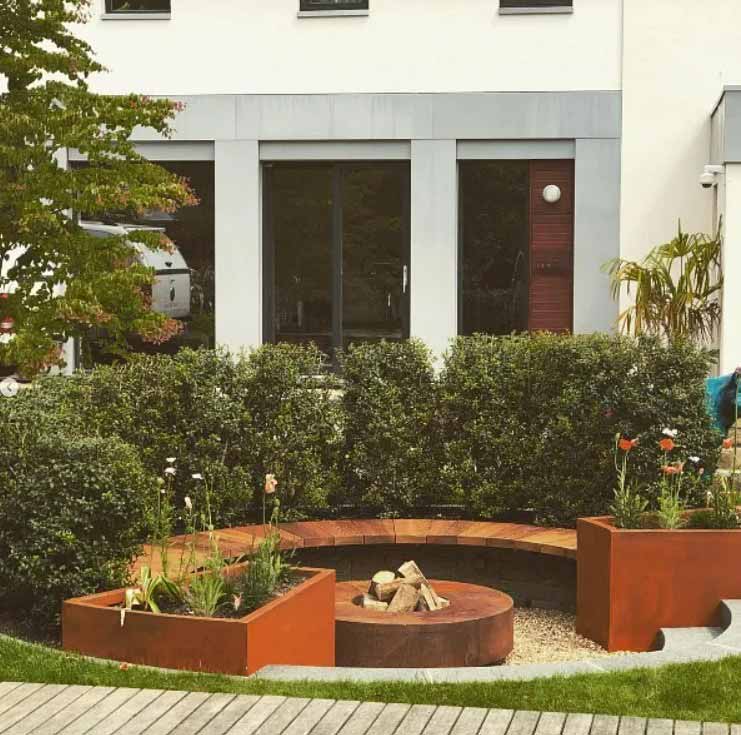
Indulge in the privacy of this semi-circle bench, enveloped by a green hedge. What sets this sunken fire pit apart is its thoughtfully crafted design, incorporating various materials.
The fire pit and plant boxes are made of metal, while the seating is crafted from wood, and the wide steps are made of stone. @markmillerlandscapes
Step-by-Step Guide to Creating Your Perfect Sunken Garden:
Sunken Garden Ideas
A sunken garden can offer a variety of benefits, from creating a sheltered seating area to cultivating a unique microclimate that supports plants that may not thrive in a regular garden. By altering soil conditions, moisture levels, and protection from wind, a sunken garden can become an ideal environment for moisture-loving plants or delicate species that need shelter.
Here’s a comprehensive guide to help plan a sunken garden while avoiding common pitfalls.
1. Understand Your Garden Before You Begin
The process of digging down into your garden to create a sunken feature will present unique challenges. Before starting any work, it is crucial to thoroughly understand the conditions of your site.
For example, discovering rock layers like sandstone during excavation can derail plans and inflate costs. It’s wise to assess your garden’s geology and secure quotes for landscaping services ahead of time to ensure you’re prepared for any unexpected obstacles.
2. Select an Optimal Location

(Image credit: The Garden Co/Clive Nichols)
Given that sunken gardens are lower than the rest of the landscape, it’s important to choose a spot that still receives sufficient sunlight.
A sunken garden may not be ideal for a north-facing area with limited light, but it could work well in a south-facing plot where the sun’s intensity can sometimes be overwhelming. Consider the sun’s path throughout the day and position the garden accordingly, especially if you want to capture evening light for maximum enjoyment.
3. Consult with a Landscaping Expert

(Image credit: James Lee Landscape & Garden Design)
Designing a sunken garden requires careful planning, especially when it comes to managing water. Drainage is a critical consideration, as improper drainage can turn your garden into a pond.
Experts recommend including linear slot drains and a soakaway system, along with permeable materials like gravel, to facilitate proper water flow. Additionally, ensure that the walls of the sunken area are structurally sound to support the weight of the soil and the water pressure behind them.
4. Avoid Going Too Deep
There is a balance between creating a welcoming, open space and one that feels cramped and dark. The deeper you make the sunken area, the higher the internal walls must be, which affects both the structural integrity and the visual appeal of the space.
Shallower walls allow more natural light into the area, making the space feel more open and inviting.
5. Ensure Easy Access
One of the main challenges of a sunken garden is accessibility. The lower the garden, the more steps are required to access it comfortably.
It’s essential to plan for easy access to ensure the space remains usable and inviting. Whether it’s a place for socializing or quiet reflection, a sunken garden should be easily accessible for spontaneous use.
6. Integrate the Sunken Garden with the Rest of Your Landscape
The design and materials used in a sunken garden should complement the broader garden space. If the sunken area is visible from other parts of the garden or the house, continuity in plant choices and materials can help integrate it seamlessly.
However, if the garden is enclosed, you have more freedom to create a distinct, private space. Consider using bold materials and unique plantings to enhance the atmosphere of this secluded area.
7. Make the Space Comfortable
A sunken garden is perfect for creating a cozy, inviting space for seating or dining.
Think of it as an outdoor room, designed to feel as comfortable as an indoor space. Choose garden furniture that suits the function of the area, whether it’s for lounging, dining, or simply relaxing in solitude.
8. Add Warmth with a Firepit or Fireplace
To enhance the ambiance and usability of your sunken garden, consider adding a fire feature. Fire pits or fireplaces can offer warmth in a sheltered space, making it an ideal spot for cooler evenings.
However, if opting for a propane fire table, exercise caution, as gas may pool in sunken areas, creating a safety risk. For greater peace of mind, consider using natural gas instead.
9. Illuminate the Garden for Evening Use
Lighting is essential to setting the right mood and ensuring your sunken garden is usable after dark. Focus on creating soft, diffused lighting that outlines the space without being overwhelming.
Use lighting to highlight key features such as water elements or sculptures. For a more atmospheric experience, consider low-key path lighting to guide the way to your garden.
10. Choose Scented and Sensory Plants
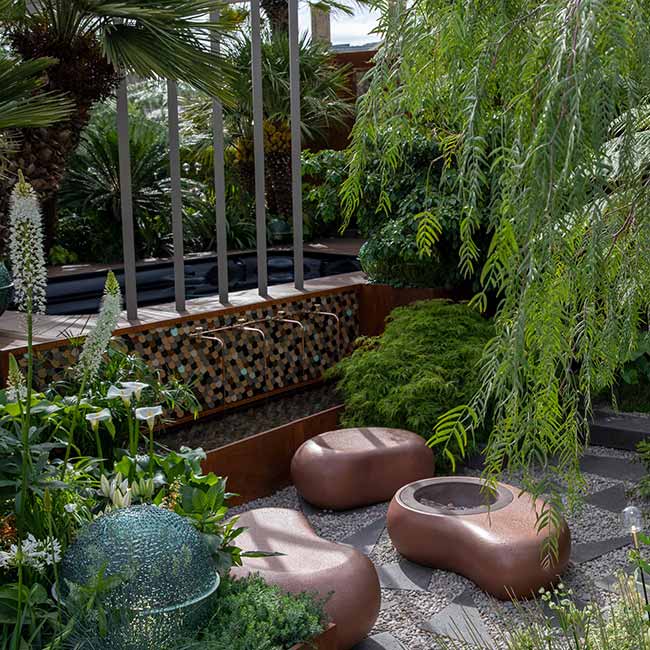
(Image credit: RHS / Sarah Cuttle)
Plants play a crucial role in enhancing the sensory experience of a sunken garden.
Trailing plants can soften the hard edges of retaining walls, while aromatic plants contribute pleasant fragrances and attract beneficial insects like bees and butterflies. By selecting plants that bloom in different seasons and provide a range of textures, you can create a vibrant and inviting environment that offers a feast for the senses.
More Ideas for a Charming Sunken Garden and Patio:
When creating a sunken area instead of a flat garden, there are a few important things to keep in mind:
- Walls: The walls surrounding your sunken garden should be strong enough to hold back the surrounding ground. The type of wall you choose depends on how deep you plan to dig for your garden.
- Drainage: Nobody wants their sunken garden to turn into a pool after every rain. Good drainage is crucial, so it’s a good idea to consult a landscape designer about this aspect.
- Depth: A sunken garden doesn’t have to be excessively deep. Sometimes, simply lowering a section of the patio or lawn can create an interesting and cozy space that stands out from the rest of the garden.
- Seating: Consider how you’ll provide seating in your sunken garden. One popular option is to use the retaining wall as a bench backrest, for instance.
- Outdoor heating: If you’re thinking of adding an outdoor fireplace, firepit, or kitchen to your sunken garden, consider their placement and how to direct smoke away from the seating areas.
- Plant Selection: Choose plants that thrive in the specific conditions of your sunken garden, such as the amount of sunlight and moisture levels. Consider using plants with different heights and textures to create visual interest.
- Lighting: Enhance the ambiance of your sunken garden with strategic lighting. Consider installing outdoor lighting fixtures that illuminate the seating areas, pathways, and key features of the garden, allowing you to enjoy the space even after sunset.
- Access: Ensure easy access to your sunken garden by incorporating steps or a gentle slope. This will make it convenient for you and your guests to navigate the space comfortably.
- Privacy: If privacy is a concern, think about incorporating hedges, trellises, or decorative screens to create a sense of seclusion in your sunken garden. This will help you create a tranquil oasis away from prying eyes.
- Water Features: Consider adding a water feature such as a small pond, fountain, or waterfall to your sunken garden. The soothing sound of running water can enhance the ambiance and create a serene atmosphere.
The most important thing is to design your sunken garden in a way that reflects your personal style and creates a relaxing and inviting space for you to enjoy. Don’t be afraid to let your creativity shine and make it a truly unique and beautiful retreat within your outdoor area.
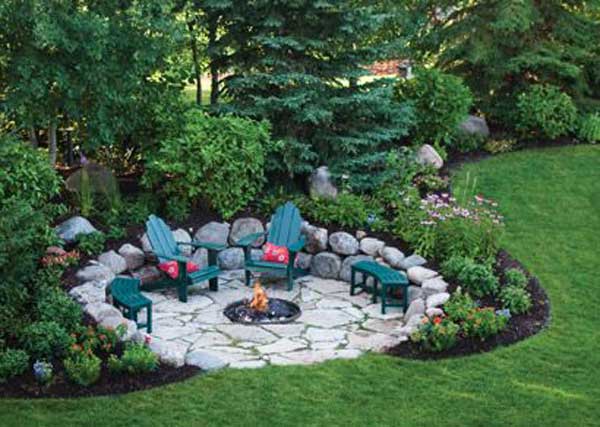
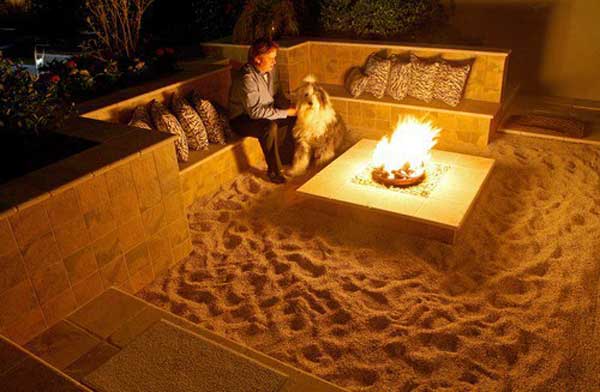
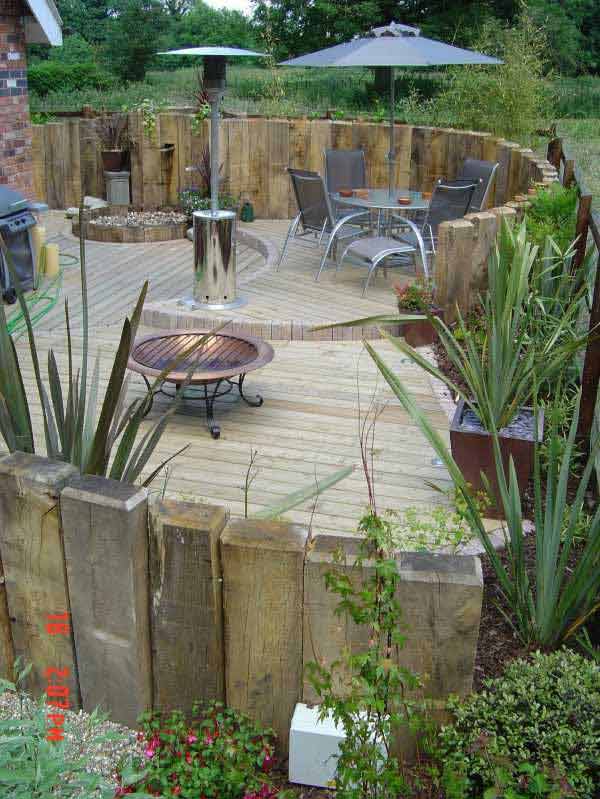

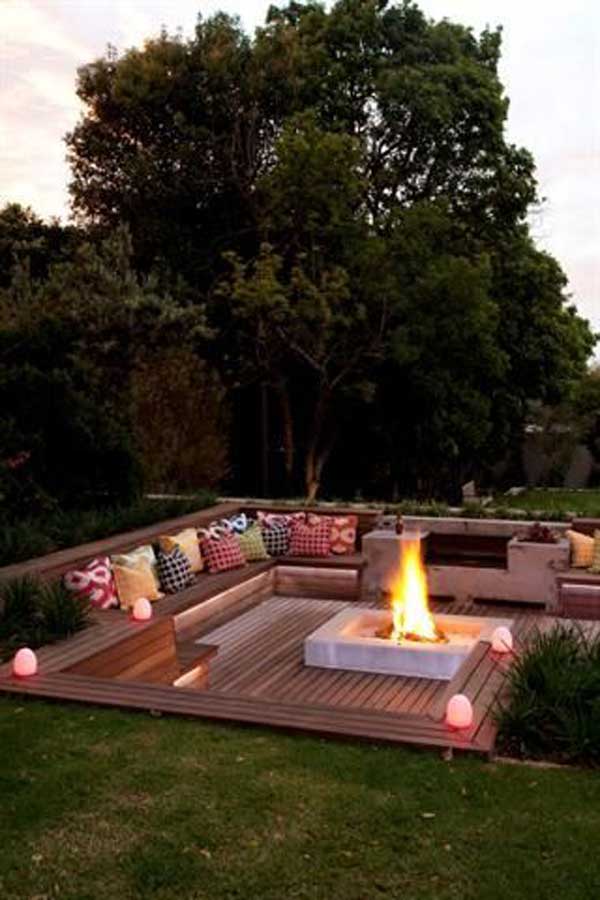
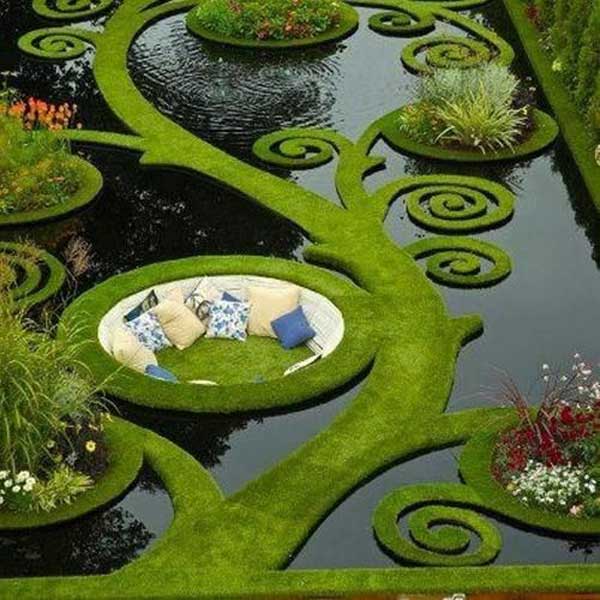
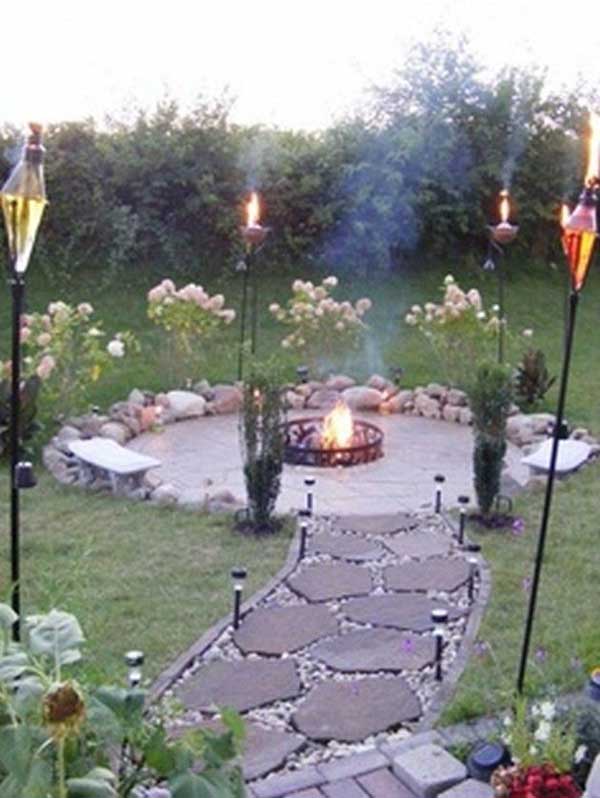
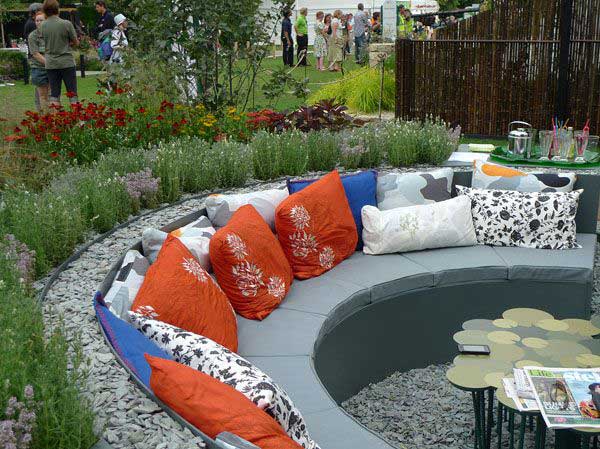

Source: awarchitect.com

Source: gardenista.com



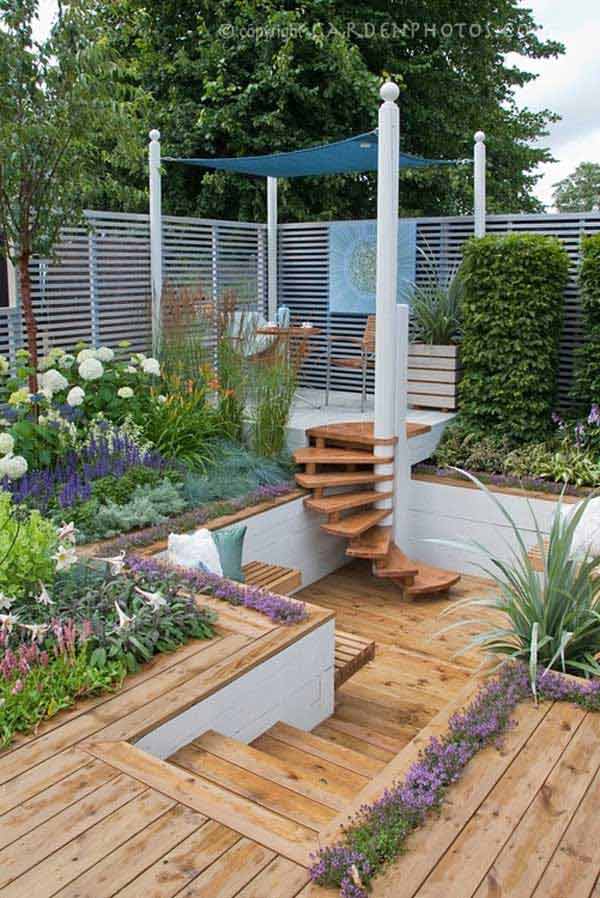
Source: photoshelter.com


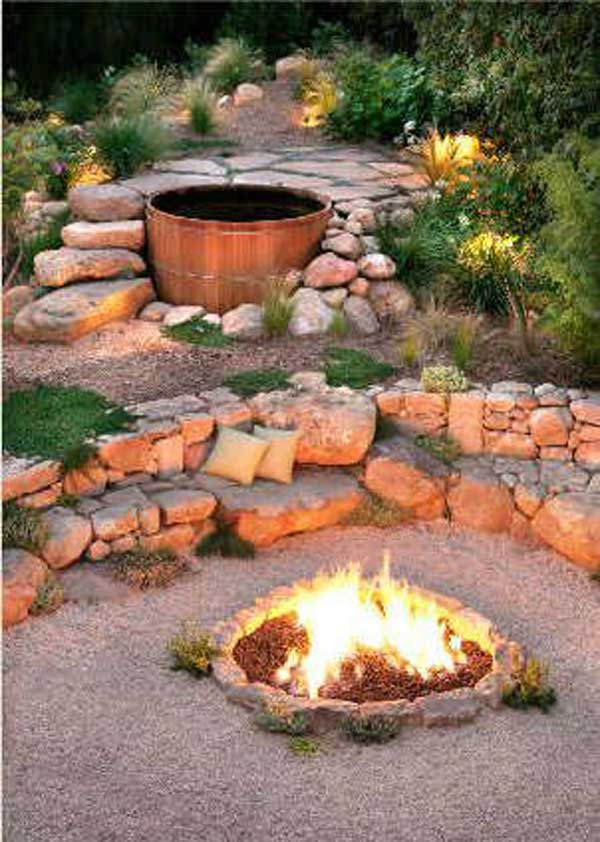
Source: gracedesignassociates.com

Source: awarchitect.com
